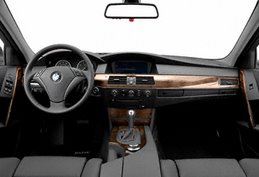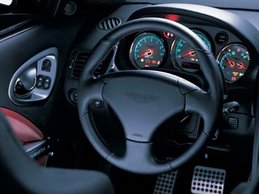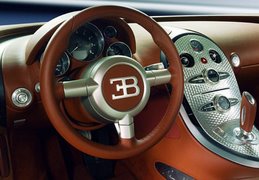 2007 Hyundai Veracruz Limited - If the Veracruz likewise depletes U.S. wallets, it won’t be by much. The base front-drive GLS begins at $26,995; five trim levels later, this Hyundai tops out at $34,695. All ride on a stretched Santa Fe platform; all are powered by the 260-horse, 3.8-liter V-6 found in the Azera sedan; all come with a third-row seat; and all include an Aisin six-speed automatic, Hyundai’s first.
2007 Hyundai Veracruz Limited - If the Veracruz likewise depletes U.S. wallets, it won’t be by much. The base front-drive GLS begins at $26,995; five trim levels later, this Hyundai tops out at $34,695. All ride on a stretched Santa Fe platform; all are powered by the 260-horse, 3.8-liter V-6 found in the Azera sedan; all come with a third-row seat; and all include an Aisin six-speed automatic, Hyundai’s first.Our front-drive Limited test sample ($33,120) arrived with an alluring load of standard-equipment creature comforts: leather, an A/C-cooled center console, a sunroof, a tilting-and-telescoping wheel, a power liftgate, backup radar, a 315-watt Infinity stereo, stability control, and more.
Inside and out, the Veracruz emits a strong whiff of Lexus RX350—not a bad SUV to copy. Even the center stack, with its zillion buttons and switches, is Lexus-like. Three rotary HVAC controls would have simplified matters, but Americans nowadays equate complexity with luxury.
Fire up th
 e Veracruz and what you notice first is what you don’t notice. There’s minimal road noise or engine noise, and the exhaust is as mute as Harpo. At both idle and WOT, the Veracruz is quieter than the Pilot or Highlander. Even the turn-signal stalk’s clicks are subdued.
e Veracruz and what you notice first is what you don’t notice. There’s minimal road noise or engine noise, and the exhaust is as mute as Harpo. At both idle and WOT, the Veracruz is quieter than the Pilot or Highlander. Even the turn-signal stalk’s clicks are subdued.Similarly Lexus-ish is throttle tip-in—gentle, gradual, almost lazy. Disable the stability control and you can churn the front Michelins for four feet at step-off. In the sprint to 60 mph, the Veracruz is 0.2 second behind the Pilot but 0.3 second ahead of a V-6 Highlander. Full-throttle upshifts are supremely smooth, and the V-6 evinces no peaks or valleys as it pulls to its 6500-rpm redline. Torque steer manifests only when you combine major throttle with a 90-degree turn.
Except for a low seat cushion, the split middle bench is a gem—roomy for three and adjustable fore-and-aft by five inches. Yank one lever and the middle seat pivots forward to afford access to the third row, where a pair of adults can ride without complaint for, well, 20 minutes. With both rows folded flat, usable floor space measures about six feet deep and 45 inches wide—in total, an excellent 87 cubic feet, sufficient to swallow a bicycle whole.
Our beefs were few. The foot-operated parking brake hangs so low it sometimes rubs your shin. Rear visibility is diminished by the fat D-pillars. Although the sp
 eed-sensitive steering tracks like a champ and is nicely weighted, it doesn’t transmit much info about road textures, and your first warning of understeer is the stability control, which is aggressive about pulling out engine spark.
eed-sensitive steering tracks like a champ and is nicely weighted, it doesn’t transmit much info about road textures, and your first warning of understeer is the stability control, which is aggressive about pulling out engine spark.Off the freeway, the Veracruz isn’t quite as engaging as the Pilot or Highlander, which are a titch more visceral, more hard-wired to the driver’s inputs. But the Hyundai’s ride, extra measure of isolation, and myriad standard features will be construed by many as a bonus layer of luxury. In fact, the Veracruz represents so much bang for the buck that Hyundai would do well to ditch its old flying-H logo, which still carries the “it’s all I could afford” stigma.













No comments:
Post a Comment